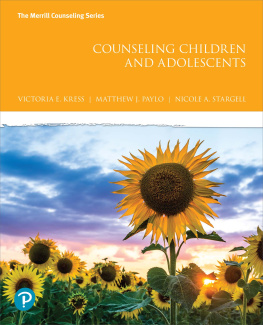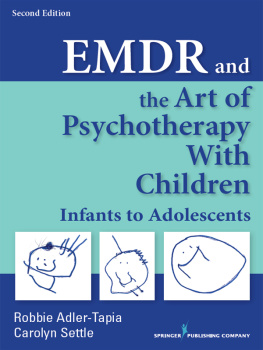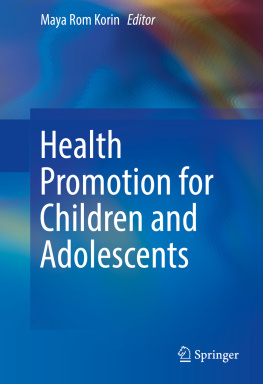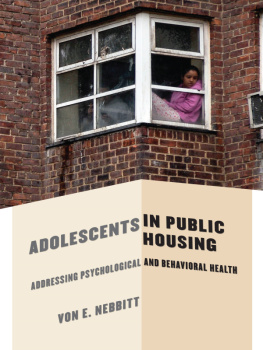SAGE was founded in 1965 by Sara Miller McCune to support the dissemination of usable knowledge by publishing innovative and high-quality research and teaching content. Today, we publish over 900 journals, including those of more than 400 learned societies, more than 800 new books per year, and a growing range of library products including archives, data, case studies, reports, and video. SAGE remains majority-owned by our founder, and after Saras lifetime will become owned by a charitable trust that secures our continued independence.
Los Angeles | London | New Delhi | Singapore | Washington DC | Melbourne
Copyright 2017 by SAGE Publications, Inc.
All rights reserved. No part of this book may be reproduced or utilized in any form or by any means, electronic or mechanical, including photocopying, recording, or by any information storage and retrieval system, without permission in writing from the publisher.
FOR INFORMATION
SAGE Publications, Inc.
2455 Teller Road
Thousand Oaks, California 91320
E-mail: order@sagepub.com
SAGE Publications Ltd.
1 Olivers Yard
55 City Road
London, EC1Y 1SP
United Kingdom
SAGE Publications India Pvt. Ltd.
B 1/I 1 Mohan Cooperative Industrial Area
Mathura Road, New Delhi 110 044
India
SAGE Publications Asia-Pacific Pte. Ltd.
3 Church Street
#1004 Samsung Hub
Singapore 049483
Development Editor: Abbie Rickard
Editorial Assistant: Carrie Montoya
eLearning Editor: Lucy Berbeo
Production Editor: Kelly DeRosa
Copy Editor: QuADS Prepress (P) Ltd.
Typesetter: Hurix Systems Pvt. Ltd.
Proofreader: Susan Schon
Indexer: Mary Harper
Cover Designer: Candice Harman
Marketing Manager: Johanna Swenson
Printed in the United States of America
Library of Congress Cataloging-in-Publication Data
Names: Underwood, Lee (Lee A.), author. | Dailey, Frances L. L., author.
Title: Counseling adolescents competently / Lee Underwood, Regent University; Frances Dailey, Regent University.
Description: Los Angeles : SAGE, 2016. | Includes bibliographical references and index.
Identifiers: LCCN 2015040083 | ISBN 9781483358857 (pbk. : alk. paper)
Subjects: LCSH: TeenagersCounseling of. | Adolescent psychology. | Counseling.
Classification: LCC HV1421 .U527 2016 | DDC 362.71/6dc23 LC record available at http://lccn.loc.gov/2015040083
This book is printed on acid-free paper.
16 17 18 19 20 10 9 8 7 6 5 4 3 2 1
Preface
Counseling Adolescents Competently is a unique work that moves the reader through four conceptual arenas that constitute competent counseling services in all settings. First, the book provides Foundational Issues in Counseling Adolescents and orients the reader to todays adolescents and how they present in counseling. It highlights how adolescents view of the world affect them and the development of the social and cultural elements, as well as interpersonal issues that they bring to counseling. First, the textbook identifies adolescents risk and protective factors to utilize within the counseling context. Second, the textbook provides information to help the reader gain theoretical perspectives to organize thoughts, approaches, understandings, and evidence-based processes when counseling adolescents. Using traditional theoretical approaches and integrating the newer generational evidence-based approaches will bridge the two theoretical worlds, while providing a comprehensive approach to thinking about adolescents. Evidence-based models such as multisystemic treatment, dialectical behavioral treatment, functional family therapy, and trauma-focused cognitive behavioral treatment are a few of the interventions that are highlighted. Third, the textbook provides evidence-informed interventions to help adolescents better mitigate the challenges they experience. Information on screening, assessment, and treatment planning and the uses of behavioral criteria are provided. This section provides information on a host of critical areas including family interventions; divorce challenges; school counseling; group interventions; career and relational issues; addictions; lesbian, gay, bisexual, and transgender concerns; and adolescents with sexually maladaptive behaviors. Fourth, the textbook provides legal and professional issues to include landmark ethical cases, supervision, and consultation, ending with the use of technology with adolescents.
Function of the Book
This book functions as a comprehensive textbook for adolescent counseling students and professionals compiling foundational and emerging skills in the counseling field. The book is written within the context of core competencies established by the Council for Accreditation of Counseling and Related Educational Programs (CACREP) 2016 graduate and doctoral programmatic standards where appropriate, and core competencies from other behavioral health programs are referenced. Both students in school and clinical mental health tracks, along with other behavioral health professionals, including social workers, marriage and family therapists, psychologists, and psychiatrists, will find the book useful in several ways. First, the book provides strong evidence for the role of professional providers involved in the practice of adolescent counseling. By providing an extensive review of clinical interventions ranging from assessment to diagnosis, professional providers are afforded a fresh perspective of intervention strategies.
Second, the book isolates and examines related core CACREP and other related competencies in the application of theoretical and clinical suppositions through most of the chapters. With the isolated competencies, both the clinical supervisor and the educator will be able to communicate with students those key issues in counseling adolescents that are most relevant to the providers professional identity. Third, the book incorporates clinical case scenarios through case conceptualization models, written from a providers standpoint, providing amplification of critical provider functions. This information assists the student in thinking about adolescent cases and forming meaningful strategies to incorporate in the actual counseling session. The clinical case studies consist of a diverse group of client issues such as school counseling needs, self-injurious behavior, addictive behaviors, disruptive behavioral disorders, substance use disorders, sexual aggression, bullying, and other commonly seen issues faced by adolescents. Fourth, the book is prepared in a way that allows instructors and professors to teach and test students, maximizing the aforementioned areas. This textbook uses friendly headers and subheaders throughout each chapter and highlights case conceptualization (where cases are presented), implications for counseling adolescents, clinical review of cases, ethical concerns and takeaway points (keystones), and chapter summaries, readers will have easy, accessible objectives of each chapter.









